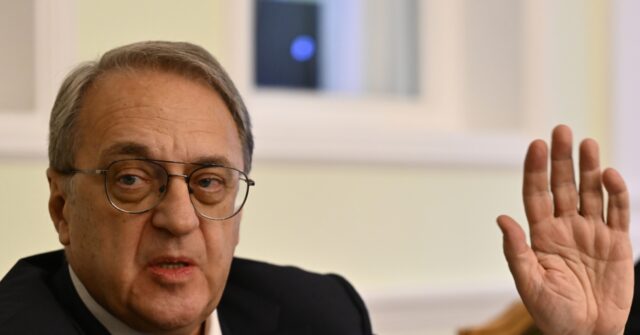Recent developments in Syria have indicated a shift in alliances, particularly involving Russia’s interactions with the rebel group Hayat Tahrir al-Sham (HTS), an offshoot of al-Qaeda. Mikahil Bogdanov, Russia’s Deputy Foreign Minister, revealed that Moscow had established “direct contact” with HTS. This engagement aims to secure a continued Russian military presence in Syria through the retention of air and naval bases, critical for Russia’s strategic interests in the region. Following the toppling of Syrian dictator Bashar Assad over the weekend, these talks have gained urgency as the new rulers of Syria may present a different dynamic in the geopolitical landscape.
Bogdanov has characterized the ongoing discussions with HTS as “constructive,” focusing primarily on the shared objective of combating a revived threat from the Islamic State (ISIS). He emphasized that HTS has recognized the importance of allowing Russia to maintain its military bases as part of efforts to curb extremist factions within Syria. Despite the ongoing instability in the region, he reassured that Russian military installations remain intact and that no immediate changes to their status are foreseen. This continued presence is underlined by the premise that the struggle against terrorism in the Middle East is far from over, marking Russia’s commitment to an ongoing anti-terrorism effort.
The Russian presence in Syria is not merely a matter of military logistics; it is also tied closely to diplomatic relations and the overall security of Russian nationals in the country. Meetings have reportedly been taking place between Russian embassy officials and HTS representatives in Damascus, highlighting the importance of aligning on security matters. Bogdanov underscored that ensuring the safety of both diplomatic personnel and Russian citizens in Syria constitutes a primary focus of these engagements. These interactions aim to solidify a mutual understanding in the face of potential threats posed by extremist groups in the region.
Further complicating the situation, a source within the Russian Defense Ministry disclosed to international media that Moscow believes it has reached an informal arrangement with HTS to maintain control over its bases. This understanding reflects a broader geopolitical context in which international stakeholders are reportedly interested in preventing destabilization that could arise from the removal of Russian forces. Western officials have implied that the continued presence of Russian bases might serve as a deterrent against the resurgence of extremism in Syria, indicating that maintaining the status quo might benefit all parties, at least temporarily.
The strategic importance of Russia’s military bases in Syria cannot be overstated. The naval facility at Tartus and the Khmeimim airfield play a pivotal role in Russia’s operations not only within Syria but also across the Mediterranean and into Africa. Given Moscow’s significant military support for Assad throughout the Syrian civil war, the fall of the regime raised legitimate concerns about the future of these bases. Intelligence reports and satellite imagery suggested many Russian military assets were withdrawn following Assad’s loss of control, intensifying Moscow’s urgency to ensure these installations remain operational and protected.
In summary, Russia’s recent engagement with HTS represents a calculated approach to sustaining its military foothold in Syria amid a rapidly changing political landscape. By fostering a collaborative relationship centered on combating terrorism, Moscow aims to retain control over critical military assets that are essential for its strategic interests in the Middle East. The unfolding situation underscores the complexities of post-conflict dynamics in Syria, revealing the delicate balance of power that continues to characterize the region and the interplay of international interests at stake.

